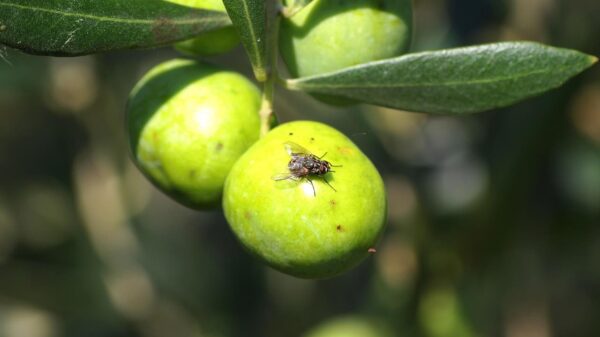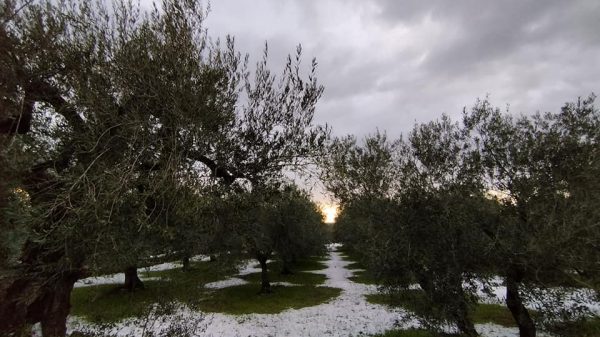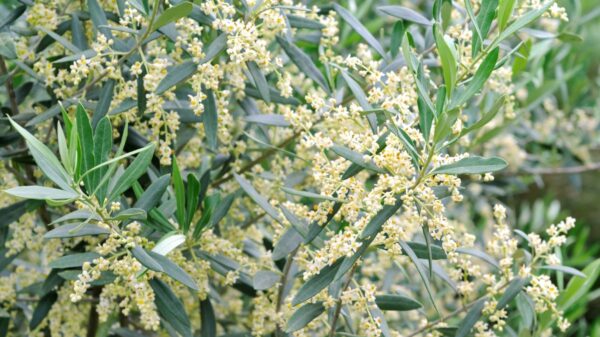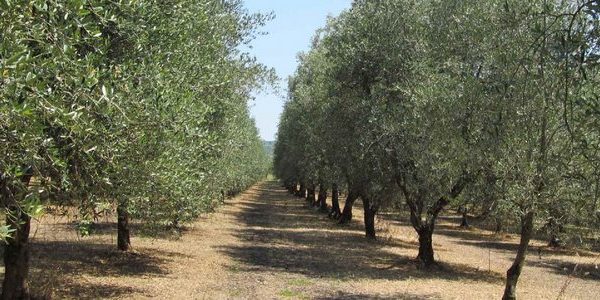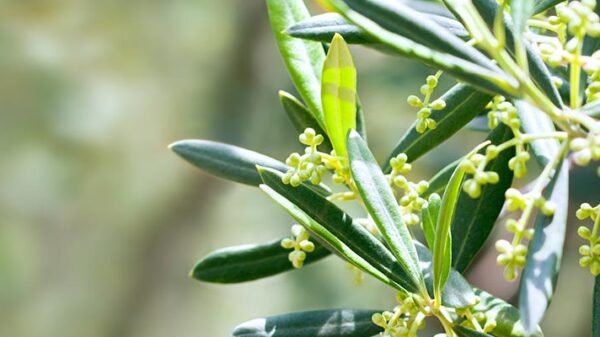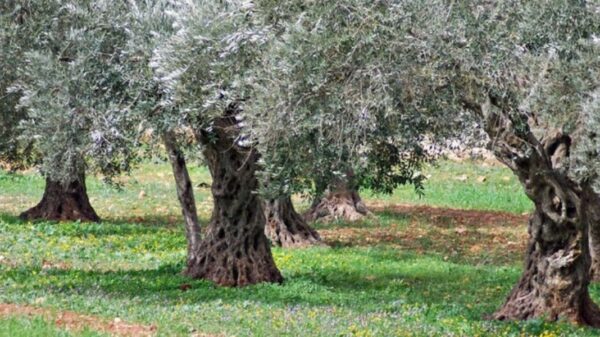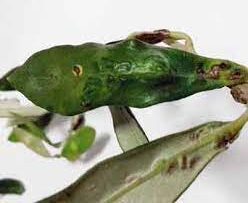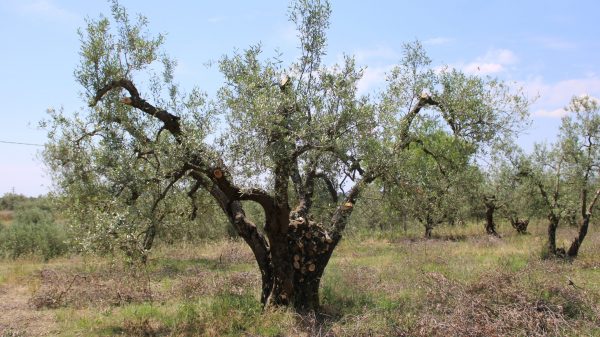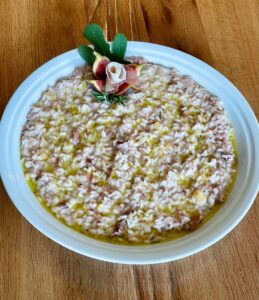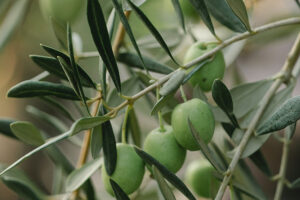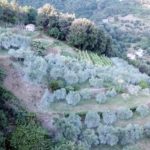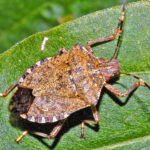Damage from are increasingly felt and feared Margaronia and, in the current year, higher infestations than in the past are being found, with the presence of eroded vegetative apexes and olives damaged right down to the stone. The causes of the increase in the phenomenon are not known: the Margaronia It has always been considered a minor parasite of the olive tree, so much so that insecticide interventions were not recommended, because they rarely involved serious losses. Just in case, a good one was recommended "suckering", to eliminate the suckers, which, with their numerous and tender leaves, provided "available food" to the larvae.
Probably the increased presence of Margaronia is due to current climatic conditions, favored, it seems, by high night temperatures. In fact, the current climatic context is characterized by long heat waves, which go from the second half of July to a good part of August, with minimal variations in temperature between day and night. So that the Margaronia, which has nocturnal habits, might well benefit from warm nights. We could also add the output dai drugs for agriculture two historic antidacic phosphorganic compounds, such as dimethoate and Phosmet, which contained Lepidoptera populations well.
La Margaronia, whose scientific name is Palpita unionalis and / or palpita vitrealis, is also known as "Green Moth" o “Olive tree borer” and it is a moth, which does not disdain ash, jasmine and privet; it damages the shoots, young and tender, which are completely nibbled, with the consequence of causing the plant to stop developing, compromising a part of the production also for the following year.
Until a few years ago, damage was found only in young plants, adult plants were rarely affected and those on olives were infrequent. Now Margaronia attacks everywhere, young and old plants.
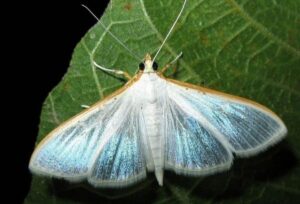 - adults di Margaronia they are bright white butterflies and along the entire upper edge of the wings they have a line of light hazel colour; they have nocturnal habits, thus, during the day, they remain at rest under the leaves, only in the evening they begin to go out and throughout the night they fly and mate. These butterflies appear between March and April e they fly until the end of Octoberfeed on honeydew, a colourless, sugary viscous secretion containing pectin, normally emitted at the apex of the leaves or from the branches of the olive tree or by scale insects.
- adults di Margaronia they are bright white butterflies and along the entire upper edge of the wings they have a line of light hazel colour; they have nocturnal habits, thus, during the day, they remain at rest under the leaves, only in the evening they begin to go out and throughout the night they fly and mate. These butterflies appear between March and April e they fly until the end of Octoberfeed on honeydew, a colourless, sugary viscous secretion containing pectin, normally emitted at the apex of the leaves or from the branches of the olive tree or by scale insects.
Le females of Margaronia they lay their eggs on the underside of the leaves, glued close to the main vein, isolated or in small groups. According to the thermal and seasonal trends, the eggs hatch after about ten days and complete their development in about a month. The larvae as soon as they emerge from the egg move, singly or in groups of 3-5 individuals, towards the tips of the youngest and most juicy shoots of the branches; there, on the underside of the leaf, a covering of shiny hairs, defined as sericei, and they erode the leaves, but only in the lower part, where they complete the first moult, then they change leaves and do the same for the other two subsequent phases.
As the larva enlarges, it changes its original color which, in the end, is one intense green. Having reached the fourth age, the larva builds a shelter with two or three leaves welded together, always with silky threads, and feeds on the whole leaf, including the main vein, so you will see leaves that are almost completely pink.
If the population is large, the fourth age larvae also erode the olives, where they create large circular notches, which deepened to the core, which remains intact. The number of generations of the Margaronia, depending on the climatic conditions, it can reach from four to ifi, which involves a considerable overlapping of generations. Wintering takes place in all stages of development, but the Margaronia seems to prefer the 2nd or 3rd age, minimally in the chrysalis stage. During wintering the larvae interrupt their nutrition and will resume it when the temperatures are not rigid.
for contrasting actions, considered the Margaronia has always been present in a non-worrying way, has no specifically registered active substances and they do have insufficient data its parasitoids and natural predators.
Currently the treatments against this moth overlap with those against the Olive fly, with the use of Acetamiprid and Deltamethrin, and, in any case, the effects on larvae which could be vulnerable, such as those of the XNUMXst and XNUMXnd stage, or less sensitive, such as those of the XNUMXrd and XNUMXth stage, are not known.
Up to now, it has been used Bacillus thuringiensis Berliner, using it at the appearance of the first damages and in the presence of larvae in the first stages of development, repeating the intervention after 6/8 days. However, the notable scaling of the summer generations, combined with the already described tendency of the larvae to create shelters with the leaves, could constitute a limitation to the use of the product.
AIPO Director
Interregional Association
Olive producers

